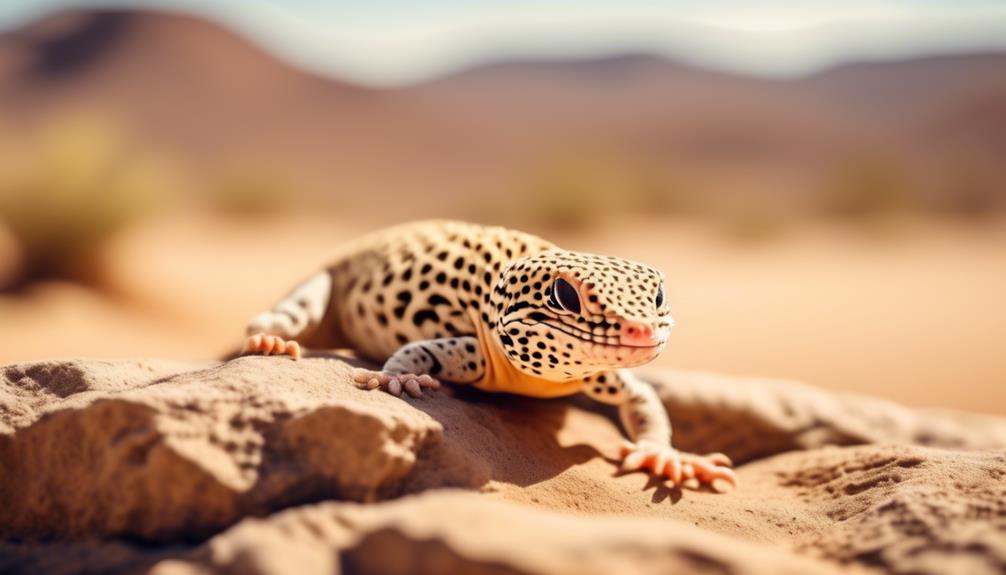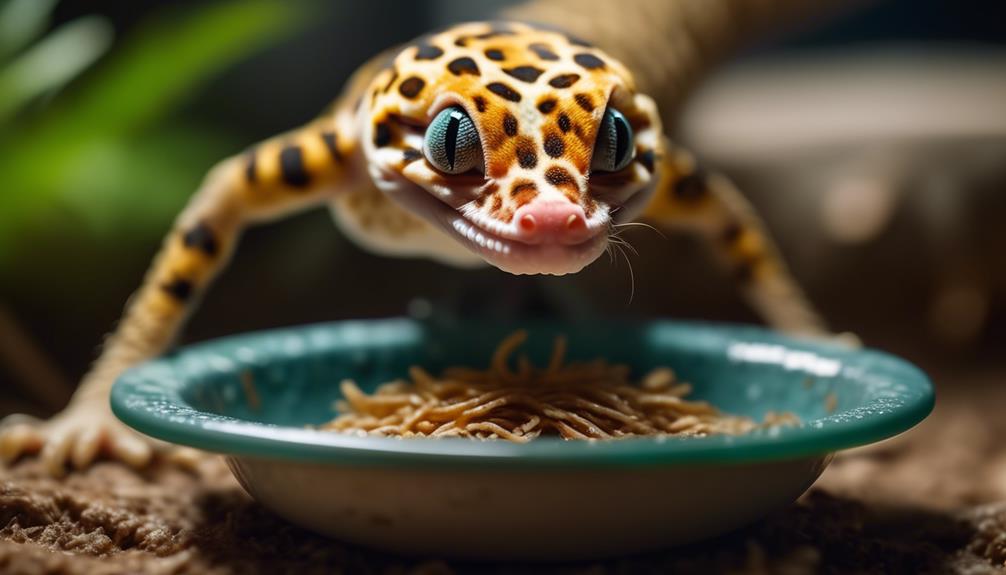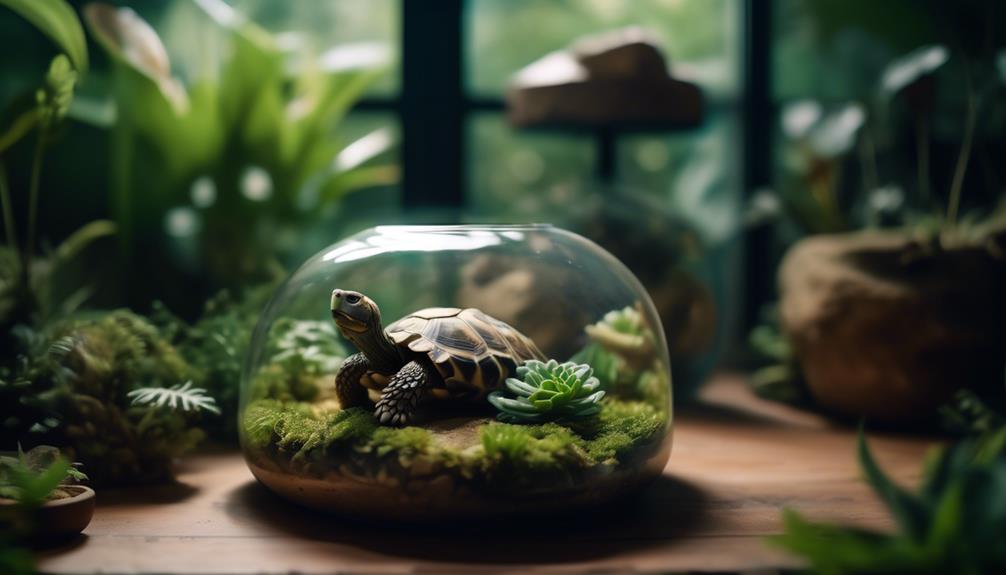Leopard Geckos, these tenacious creatures, have mastered the art of survival in the harshest of environments. How do they quench their thirst in the arid landscapes they call home?
In this article, we explore the remarkable adaptations that allow these geckos to conquer the thirsty test. From their ingenious water-saving mechanisms to their evolved behaviors, we uncover the secrets behind their resilience.
So, if you're curious about the fascinating world of Leopard Geckos and how they navigate the challenges of limited water resources, prepare to be amazed.
Key Takeaways
- Comment approval ensures appropriate content and helps maintain a positive and safe environment.
- Required fields for commenting (name, email, and message) maintain accountability and prevent misuse.
- The name and email fields contribute to building a sense of community while ensuring privacy and security.
- The message field allows commenters to express their thoughts, encourage meaningful discussions, and share insights and opinions.
Understanding Leopard Gecko Hydration
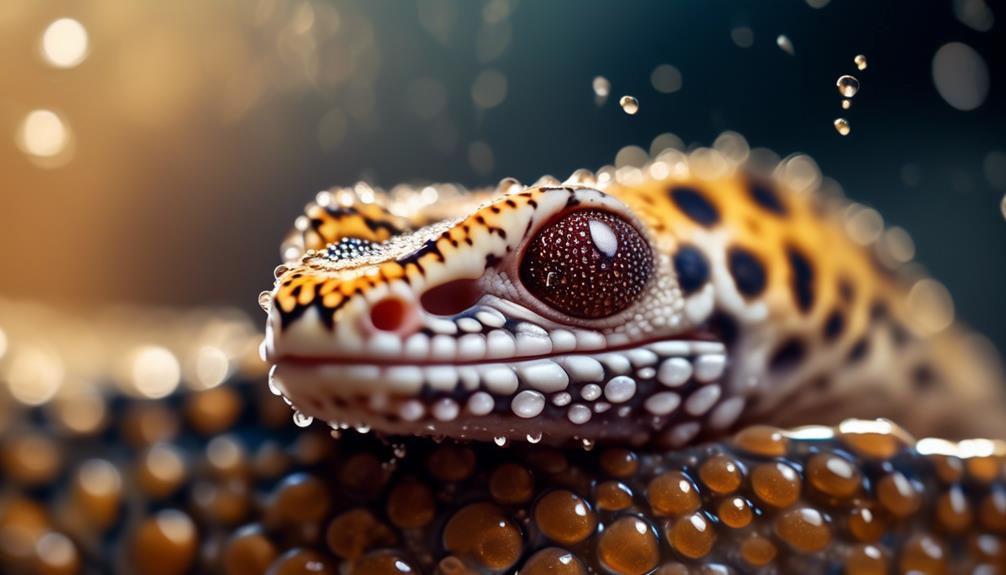
Understanding Leopard Gecko Hydration requires careful observation of their drinking behavior and the physiological adaptations that enable them to survive in arid environments.
These remarkable creatures have evolved mechanisms to prevent dehydration related illnesses, such as organ failure and heat stroke. One of the key factors in leopard gecko hydration is maintaining appropriate humidity levels in their habitat.
Leopard geckos are native to arid regions, where water is scarce. They've adapted to this environment by conserving water and extracting moisture from their food. However, they still require a certain level of humidity to keep their skin hydrated and aid in shedding. Insufficient humidity can lead to problems like dry skin, difficulty shedding, and dehydration.
It's crucial for leopard gecko owners to provide a suitable environment with proper humidity levels to ensure their pet's well-being and prevent dehydration-related issues.
Importance of Proper Watering Techniques
Proper watering techniques are essential for ensuring the adequate hydration of leopard geckos in their arid habitat. These techniques play a crucial role in maintaining the overall health and well-being of these reptiles.
Here are four important factors to consider when it comes to watering leopard geckos:
- Watering frequency: Leopard geckos should have access to fresh water at all times. It's recommended to provide a shallow dish of water that's cleaned and refilled regularly.
- Hydration methods: In addition to the water dish, leopard geckos may also benefit from occasional misting. This can be done using a spray bottle filled with dechlorinated water.
- Temperature considerations: The water provided to leopard geckos should be at room temperature or slightly warmer. Avoid using water that's too cold or hot, as extreme temperatures can be harmful.
- Monitoring water intake: Keep a close eye on the amount of water consumed by your leopard gecko. Inadequate water intake could be a sign of dehydration and may require immediate attention.
Signs of Dehydration in Leopard Geckos
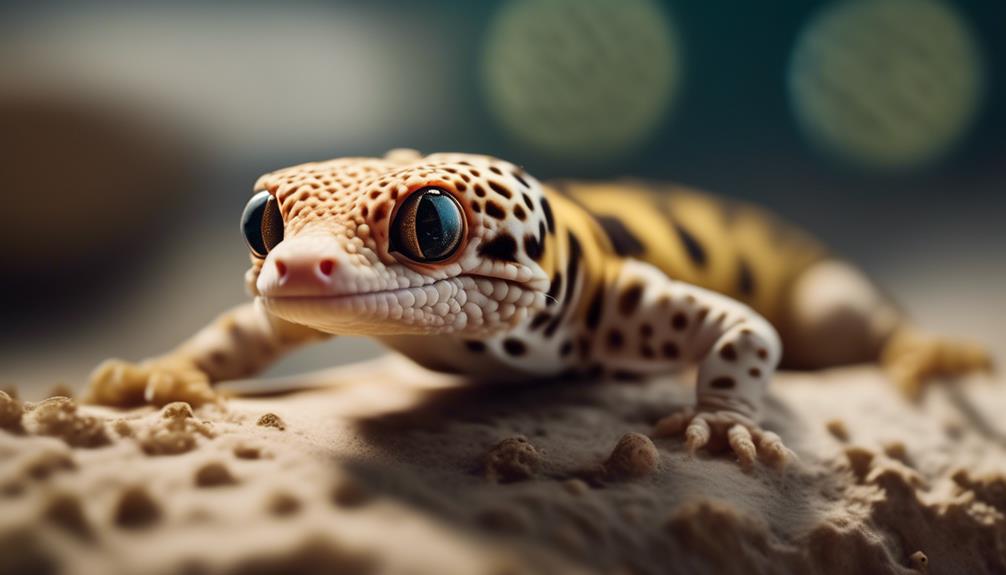
After discussing the importance of proper watering techniques for leopard geckos, it's crucial to now focus on identifying the signs of dehydration in these reptiles.
Dehydration can have serious consequences for leopard geckos, so it's important to be able to recognize the common signs. One of the most noticeable signs is dry and wrinkled skin. Dehydrated geckos may also have sunken eyes, indicating a lack of moisture. Another sign is reduced appetite and weight loss. They may also become lethargic and less active.
If you suspect your leopard gecko is dehydrated, it's important to seek treatment options immediately. Providing a shallow dish of clean, fresh water and misting their enclosure can help rehydrate them. In severe cases, it may be necessary to administer fluids orally or through injections.
Strategies for Maintaining Proper Hydration
To ensure adequate hydration for leopard geckos, it's essential to implement effective strategies. Here are some strategies for increasing water intake and the benefits of providing a water dish:
- Regularly offer a shallow water dish: Placing a shallow dish filled with clean water in the gecko's enclosure allows them easy access to drink whenever they need to. This helps prevent dehydration and ensures their hydration needs are met.
- Monitor water levels: Check the water dish regularly to ensure that it's always filled with clean, fresh water. Refill or replace the water as needed to maintain the gecko's access to hydration.
- Consider misting: In addition to a water dish, misting the enclosure with water can provide an additional source of moisture for the gecko. This can mimic their natural environment and encourage them to drink.
- Offer live food with high water content: Feeding the gecko live insects that have a high water content, such as crickets or mealworms, can contribute to their hydration.
Promoting a Healthy Watering Routine

Implementing a consistent and well-structured watering routine is crucial for ensuring the optimal hydration of leopard geckos. These reptiles have specific water requirements that must be met to maintain their health.
Leopard geckos consume water by drinking it directly from a water dish. Therefore, providing a suitable water dish environment is essential. The water dish should be shallow to prevent drowning and easily accessible for the gecko.
It's important to clean and refill the water dish regularly to prevent the buildup of bacteria and ensure the water remains fresh.
Additionally, monitoring leopard gecko water consumption is vital. By observing their behavior and checking the water dish regularly, we can ensure that the geckos are adequately hydrated.
Frequently Asked Questions
How Often Should I Offer Water to My Leopard Gecko?
We offer water to our leopard geckos regularly to ensure proper hydration. However, it's important to note that they can also get water from moisture-rich foods like insects and fruits.
Can I Use Tap Water for My Leopard Gecko's Hydration Needs?
Yes, tap water can be used for leopard geckos' hydration needs. However, using filtered water is beneficial as it removes impurities. Misting is also important for hydration, as it simulates their natural environment.
Are There Any Alternatives to Water for Hydrating Leopard Geckos?
There are several hydration alternatives for leopard geckos aside from water. Natural water sources, such as moist foods like fruits and vegetables, can provide necessary hydration. These alternatives can help maintain the gecko's overall health and well-being.
What Are the Potential Risks of Overhydrating a Leopard Gecko?
Overhydrating a leopard gecko can lead to serious health risks, including bloating and respiratory issues. Signs of dehydration, such as sunken eyes and loss of appetite, should be closely monitored to prevent overhydration.
How Can I Encourage My Leopard Gecko to Drink More Water?
We can encourage leopard geckos to drink more water by providing a shallow dish of fresh water, misting their enclosure, and offering live insects with high water content. Proper hydration is crucial for leopard geckos' overall health and well-being.
Conclusion
In conclusion, the world of Leopard Geckos is a testament to the incredible adaptability and resilience of these remarkable creatures.
Their ability to survive in arid environments, relying on water-saving mechanisms and behavior patterns, is truly awe-inspiring.
By delving into their unique hydration strategies, we gain a deeper understanding of the wonders of the animal kingdom.
So, let's continue to marvel at the Leopard Geckos as they conquer the thirsty test, reminding us of the beauty and resourcefulness found in nature.
